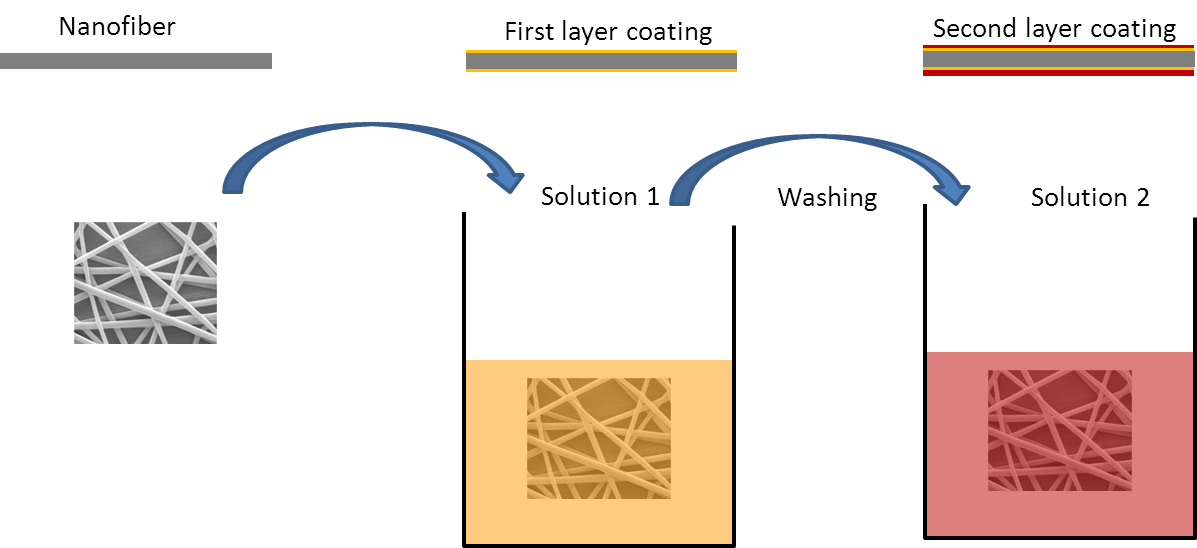▼ Reference
- Deng H, Zhou X, Wang X, Zhang C, Ding B, Zhang Q, Du Y. Layer-by-layer structured polysaccharides film-coated cellulose nanofibrous mats for cell culture. Carbohydrate Polymers 2010; 80: 474.
- Ding B, Gong J, Kim J, Shiratori S. Polyoxometalate nanotubes from layer-by-layer coating and thermal removal of electrospun nanofibres. Nanotechnology 2005; 16: 785.
- Ding B, Li C, Fujita S, Shiratori S. Layer-by-layer self-assembled tubular films containing polyoxometalate on electrospun nanofibers. Colloids and Surfaces A: Physicochem. Eng. Aspects 2006; 284-285: 257.
- Ding B, Kim J, Kimura E, Shiratori S. Layer-by-layer structured films of TiO2 nanoparticles and poly(acrylic acid) on electrospun nanofibres. Nanotechnology 2004; 15: 913.
- Muller K, Quinn J F, Johnston A P R, Becker M, Greiner A, Caruso F. Polyelectrolyte Functionalization of Electrospun Fibers. Chem. Mater. 2006; 18: 2397.
- Ogawa T, Ding B, Sone Y, Shiratori S. Super-hydrophobic surfaces of layer-by-layer structured film-coated electrospun nanofibrous membranes. Nanotechnology 2007; 18: 165607.
- Sakai S, Yamada Y, Yamaguchi T, Ciach T, Kawakami K. Surface immobilization of poly(ethyleneimine) and plasmid DNA on electrospun poly(L-lactic acid) fibrous mats using a layer-by-layer approach for gene delivery. J Biomed Mater. Res 2009; 88A: 281.
- Sandua X, Rivero PJ, Esparza J, Fernández-Palacio J, Conde A, Rodríguez RJ. Design of Photocatalytic Functional Coatings Based on the Immobilization of Metal Oxide Particles by the Combination of Electrospinning and Layer-by-Layer Deposition Techniques. Coatings. 2022; 12(6):862. Open Access
- Wang X, Kim Y G, Drew C, Ku B C, Kumar J, Samuelson L A. Electrostatic Assembly of Conjugated Polymer Thin Layers on Electrospun Nanofibrous Membranes for Biosensors. Nano Lett. 2004; 4: 331.
▼ Credit and Acknowledgement
Author
Wee-Eong TEO View profile
Email: weeeong@yahoo.com
 ElectrospinTech
ElectrospinTech
